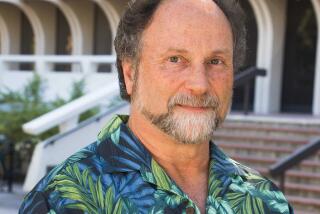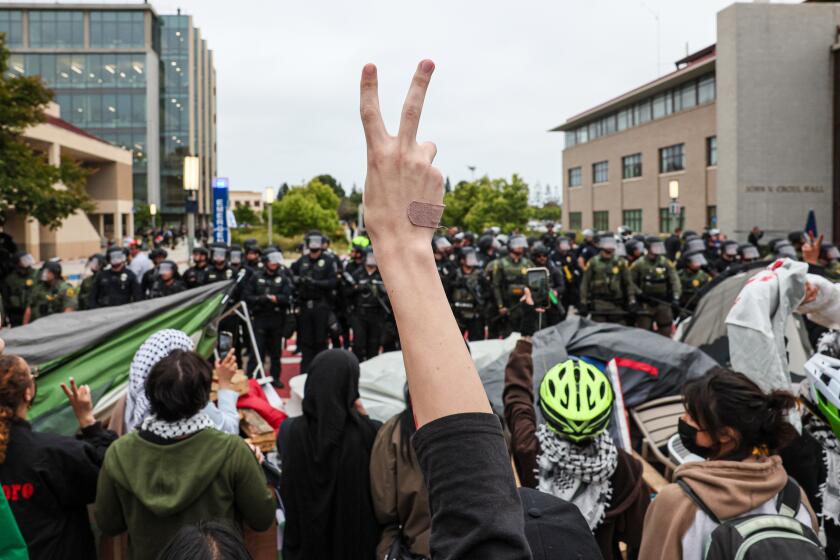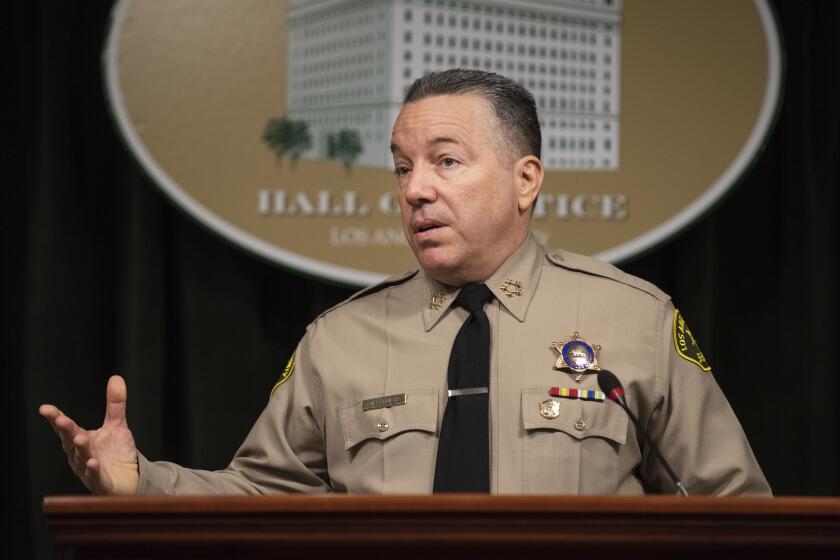Near Santa Monica’s Glitz, the Grit of a Different Life
The slaying of a popular high school student has touched a nerve in Santa Monica, prompting discussions about a racial, ethnic and class divide in a city better known for its posh beach resorts, celebrity sightings and Hollywood connections.
Eddie Lopez, 15, was shot to death on Pico Boulevard, at the edge of a neighborhood struggling with gang violence and poverty not far from the beachside glitz.
The Santa Monica High School 10th-grader grew up in an apartment in that area, called the Pico neighborhood. It is a low-income pocket with the largest proportion of blacks and Latinos in the city of 84,000 that is nearly three-quarters white.
Lopez was not known to have any gang affiliations and was apparently mistaken for a gang member by his attacker. His death last month has brought the problems of the Pico district to the forefront, in what neighborhood residents say is an overdue change for a city that has tended to focus on issues such as homelessness and the environment.
“You have people drowning in poverty in an ocean of wealth,” said Oscar de la Torre, a school board member and founder of the Pico Youth and Family Center, an organization for at-risk teens and young adults.
Santa Monica is familiar to outsiders mostly for such attractions as the Third Street Promenade, the pier amusement park and the beach, all huge tourist draws.
The city is home to architect Frank Gehry and a thriving arts scene. Near its northern fringe, Montana Avenue has become a hangout and shopping district for celebrities -- and is the backdrop for countless paparazzi photos. To the south, sleek business parks cater to entertainment industry titans such as MTV and Yahoo.
But a closer look at Santa Monica reveals a more complex picture.
The Pico neighborhood is a large rectangular area bounded approximately by Lincoln Boulevard, Pico Boulevard, Centinela Avenue and Colorado Avenue. According to a 2003 Rand Corp. study, the median household income for the city as a whole was $50,714 in 1999. In the Pico area, the median income was $39,821. By contrast, the median income in the tony neighborhood north of Montana Avenue is $118,553.
Decades of housing segregation and property covenants wedged much of Santa Monica’s minority population into the Pico area’s densely populated blocks.
The Santa Monica Freeway, completed in the mid-1960s, sliced through the Pico district, eliminating hundreds of apartments and houses, and cutting the neighborhood off from the city’s downtown and more prosperous northern sectors. The hard edges that resulted contributed to a sense of physical isolation.
That isolation could explain in part why young people from the Pico neighborhood tend when riding their bikes not to venture north of Montana, where, they say, police ask not “How are you doing?” but “What are you doing?”
It could also explain why Santa Monica’s well-chronicled homeless people, who hang out in high-profile areas such as Palisades Park and the Third Street Promenade, seem to attract more attention from City Hall than do the problems in Pico.
Lopez was shot at the southern edge of the Pico neighborhood about 9:20 p.m. on Feb. 28. Police say a gunman shouted the name of a Los Angeles-based Latino gang and then fired several shots at Lopez and two teenage companions. He struck only Lopez.
Streets in the heart of the Pico neighborhood are a hodgepodge of single-family houses and apartment buildings. Here and there, a freshly landscaped house shows the results of a thoroughly upscale renovation. Many properties appear tattered and ill-maintained, while others would fit comfortably into any middle-class area in Los Angeles.
The Pico neighborhood has seen significant gentrification in recent years. Anna Gee, a real estate agent, said single-family houses with three bedrooms and two baths are selling for $1.2 million. The neighborhood’s rapid evolution, some residents say, has added to the concerns of longtime Pico dwellers.
“Resentment goes up because the stakes are so high,” said Clyde Smith, a retired resident who does volunteer work for the Pico Neighborhood Assn. “New properties that come on the market or condos by and large are going to be bought by people who can afford them.”
Some in Pico and beyond feel the city isn’t paying enough attention to their concerns about crime and gentrification.
“For all the extremely liberal palaver that comes out of City Council, the actual stuff they do for that area is pretty minimal,” said Lawrence Dietz, an author who lives in the city’s prosperous Sunset Park area. “Those people have to scream their lungs out to get anything to happen.”
City officials dispute such suggestions, pointing out that they have invested millions of dollars over the years to fund programs for the Pico neighborhood, including social services and anti-violence efforts.
“There has been an amazing commitment of city funds to grapple with what can be intractable issues,” said Barbara Stinchfield, the city’s director of community and cultural services.
At the recently renovated and expanded Virginia Avenue Park, designed by the noted Santa Monica-based firm Koning Eizenberg Architecture, teens take advantage of free fitness sessions and homework help, among other programs.
The project took 10 years, partly because the city worked to buy adjoining parcels and partly because of a need to air community concerns.
“Everyone we worked with was absolutely conscious of trying to weave the community back together,” said architect Julie Eizenberg, referring to the gentrifying area around the park and “the Latino and African American community who have felt shortchanged.”
Still, Virginia Avenue is the only one of the city’s two dozen parks with a police substation. De la Torre said that police get suspicious when Latino or black youths cluster in the park’s outdoor areas and typically ask them to disperse. “We’re treated like second-class citizens,” he said.
De la Torre also contends that the city is reluctant to acknowledge the seriousness of its gang issues.
“I think a lot of people want to deny that Santa Monica has a gang problem,” he said. “Admitting a gang problem is bad for tourism.”
Police Chief James T. Butts Jr. maintains that Santa Monica’s gang problems are not as severe as De la Torre and others believe. Butts said the most serious problems result when gang members from neighboring Los Angeles areas cross into Santa Monica. He suspects that Lopez’s killer, who is still at large, is from a Los Angeles gang.
“The biggest problem we have is violence imported from Venice 13, Shoreline Crips, Sotel or Culver City Boyz in Mar Vista,” Butts said, rattling off the names of prominent or once-prominent Westside gangs. “Our people get in some type of altercation with them in L.A..... They come here to exact retribution.”
At Santa Monica High and in the Pico neighborhood, Lopez’s family and friends hope that his death will inspire the community and city officials to work together. Lopez was a talented athlete and personable student whose class clowning masked his good grades.
His death hit the high school particularly hard because it came after a period of campus tensions between black and Latino students. The high school is one of the few places in the city where the different sides of Santa Monica come together -- Latino and black students from Pico as well as the children of affluent professionals who live north of Wilshire Boulevard.
After his death, students of all races rallied, forming a club called Against All Odds and planning a multicultural mural in his honor.
“He left a very positive life behind him,” said Aranzasu De La O, 23, a cousin and USC graduate with whom Eddie had planned to confer about college. “I hope that some of the youth now are thinking about following in those footsteps and thinking that what Eddie was doing is the right way and the cool way.”
More to Read
Sign up for Essential California
The most important California stories and recommendations in your inbox every morning.
You may occasionally receive promotional content from the Los Angeles Times.











